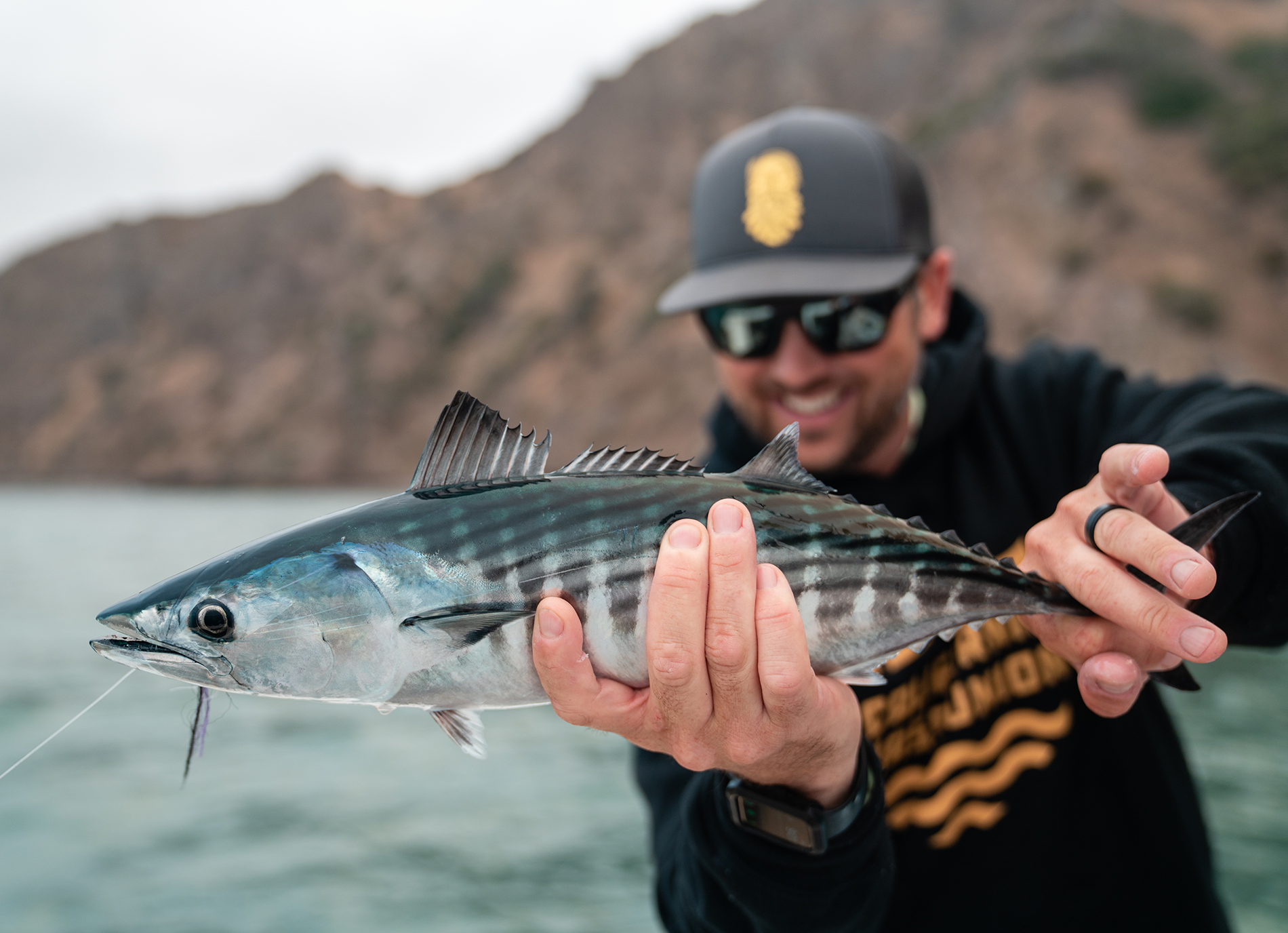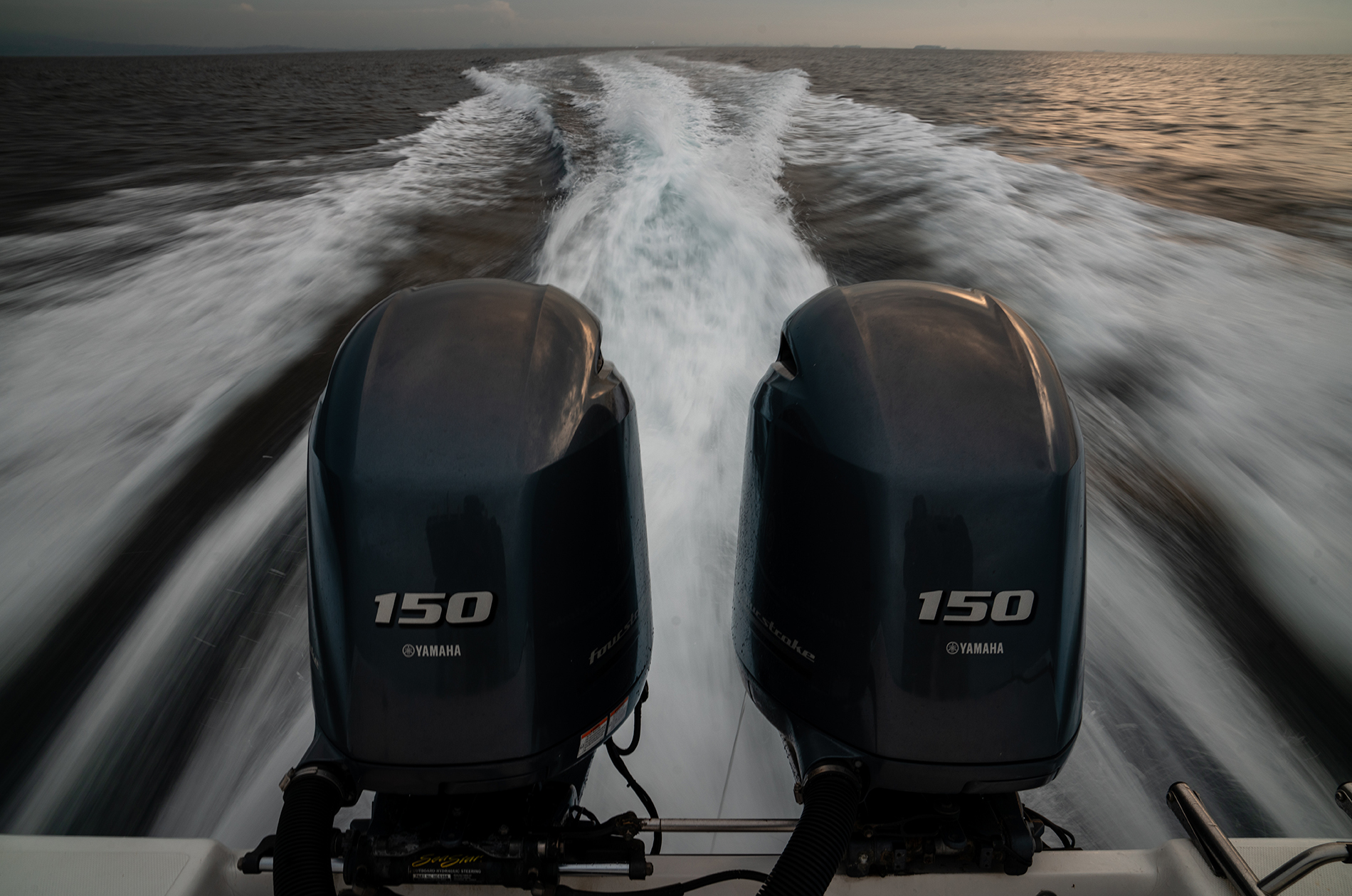
6 minute read
Catalina Island: The Surprising Diversity of the Sport
Bigger than Trout:
The Surprising Diversity of the Sport
Fly shops in the American West are built for one species: trout. Trout are deserving of their fame, and are worthy of serving as the foundation upon which the sport of fly fishing was built. As anglers are discovering that the sport is bigger than trout, both the fish and the angler are winning.
By BRETT ZUNDEL

Along California’s densely populated southern coast there exists an urban expanse, rarely interrupted between Ventura and the Mexico border. It’s home to famously perfect weather, iconic beaches, and millions of people. But 29 short miles of the coast of Long Beach lies Santa Catalina Island. A desert oasis in the middle of the Pacific Ocean that time has seemingly forgotten, it stands out for its rugged beauty both above and below the ocean’s surface. But what makes Catalina Island most unique, is its proximity to one of the most populous areas on the continent. It’s like a secret that lies hidden just out of sight for residents of Los Angeles and Orange County.

Any Surprises?
It sounds inflated to say that there are any secrets or any surprises in the most populous state in the country—especially given that it is famous for being, well, famous. But anglers in California have been sitting on secrets like these for decades.

For one, California fisheries are overshadowed by their neighbors. The trout fisheries in the north are in towns like Redding and Dunsmuir and Mammoth Lakes. While they lack the prestige of Bend or Boulder or Missoula, they certainly don’t lack the fishing opportunities. Whereas the steelhead streams of Southern Oregon are infamous and historical and romantic, the steelhead rivers of California are widely unknown (sorry, they will remain so here). California’s fishing opportunities extend further once anglers begin to look at species not named oncorhynchus mykiss. Or any trout for that matter. Large and smallmouth bass are everywhere. The striper fishing in the Sacramento Delta is crazy. Anglers in San Francisco are catching halibut on the fly underneath the Golden Gate Bridge. And that brings us back to Catalina Island.
Getting out to Catalina Island to catch fish is easy enough. There are dozens of party boats and private charters. But for anglers looking to catch fish on the fly, there is really only one option.

A Pioneering Guide
Captain Vaughn Podmore is the first—and only—guide to have committed himself to pioneering this fishery. It doesn’t take long to get the sense the Vaughn is completely dialed in to fishing here—though he will celebrate a great fish or mourn (and chide) the loss of tuna at the hand of a seal—he rarely seems surprised. The baitfish patterns he tied the night before look identical to the chum purchased before leaving the harbor. Even the bald eagles on the island seem to recognize him when he shows up in the morning.
But, as Vaughn has found, a fly rod can be an effective and rewarding way to fish Catalina’s waters. First, a single baitfish pattern can last all day day, withstanding the beating of dozens of Calico Bass, Baracuda, Yellow Tail and Bonita. Like all great guides, Vaughn loves catching fish—whether he’s holding the rod or directing clients. And, like all great guides, Vaughn is deeply concerned about the health of the fish and the fishery.

The Beauty and the Burden
Perhaps that is both the beauty and the burden of being a fishery’s only fly guide: you have the resource and the responsibility of protecting it all to yourself. He is hesitant to harvest fish, but when he does it is done with reverence and then enjoyed with gratitude.
Of course, Catalina Island isn’t the only place in the world where fish-other-than-trout are chased with a fly rod.
There are anglers all over the world who have never fished for trout because they live in places where other species are either more abundant or more enjoyable to target. In these places, fly fishing can mean a variety of styles or species. But for many fly anglers—especially in the American west—fly fishing is trout. Full stop. The sport has fittingly developed this reputation with roots in rivers, and a popularity that is spurred by the romantic vision of trout fishing propagated in films. But there are two reasons why this is beginning to change.

First, anglers are beginning to recognize that trout—although they are the iconic fly fishing species— are neither the most abundant species available, nor are they necessarily the most enjoyable to target. Even anglers in renowned trout destinations are waking up to the excitement of targeting other species, and realizing just how abundant their habitat is.

Second, as the world grapples with the realities of climate change, and the American west bears the brunt of that changing climate, cold water fisheries are increasingly recognized as precious, endangered, and delicate. Local governments have closed fisheries due to poor fish counts or dangerous conditions. And anglers themselves have recognized that their local streams will require less pressure if they are to remain sustainable fisheries.

Relieving Pressure
As a sport, fly fishing feels like it is molting—shedding it’s old troutshaped identity and growing into a new one where there are new species, styles and fisheries to be explored. This is true in exotic locations like Catalina Island, but it’s just as true in irrigation canals and golf course ponds.
Trout are worthy of all the love they receive, and certainly worthy of our efforts to protect them and the precious places that they live. But perhaps the best way we can protect trout—and have a lot of fun in the process—is to expand the horizons of what fly fishing is and can be.











